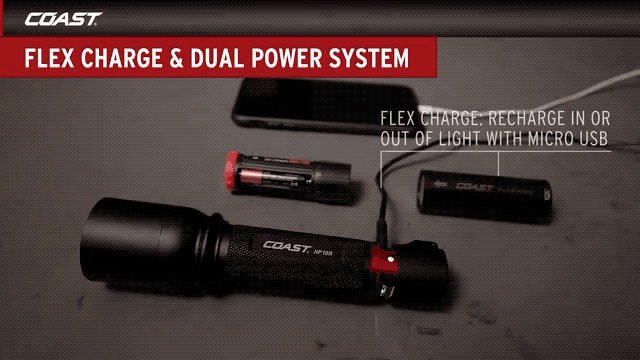Choosing the right lamp can be a difficult task. The offer is huge and what should you pay attention to? Elfa helps you make the right choice.

There is an ideal lamp for every application. Making the right choice requires some knowledge, so it is often best to have an expert inform you about the possibilities. From a small inspection lamp to robust work lighting, the possibilities are endless. The most important things to pay attention to are discussed below.
The first choice that has to be made is between rechargeable and non-rechargeable.
Upsides of rechargeable
The upsides of rechargeable are: always ready for use (if charged), better for the environment (it isn’t necessary to throw batteries away again and again) and batteries of rechargeable lighting do not leak after not having been used for a long time, as is the case with batteries. And lanterns with a rechargeable battery tend to be more powerful. So for daily use, rechargeable is the best choice in most cases.
Downsides of rechargeable
A downside of rechargeable lighting may be that when the battery is dead, the lamp cannot be used during charging. A number of manufacturers offers a solution to this, however: by supplying an additional battery. An example of this Is the ‘Flex charge & dual power system’ of COAST. This battery can be charged externally, while in the meantime the lantern can be used with another battery. However, this system goes even further: the battery can also be used to charge other devices.
‘Flex charge & dual power system’ from COAST.

Upsides of non-rechargeable
Upsides of the non-rechargeable variant include: affordable (often cheaper and more widely available than the rechargeable variant), the lamp is always ready for use if batteries are present (one does not have to wait for the batteries to recharge). For people who do not use their flashlight on a daily basis, non-rechargeable is probably better. It is important, however to consider what type of batteries go into the lantern. For instance, lanterns with CR123 batteries keep their voltage for up to 10 years.
Downsides of non-rechargeable
Downsides of non-rechargeable lanterns are: not good for the environment (batteries are thrown away), less powerful than rechargeable batteries and may start leaking after not having been used for long periods of time.
Virtually all lamps that Elfa supplies for construction and industry are LED lamps. For the professional, LED has a number of evident benefits. First, there is little heat development. Energy that is converted into heat is lost. This means the LED lamps have a higher light output than the halogen ones. In addition, the lamps are extremely economical, which is particularly essential in rechargeable lamps. Of course, the combination of a high-quality LED with a powerful, high-quality battery is decisive for the autonomy (or burn time) of the lamps. Furthermore, LED lamps are more shock-resistant than halogen and LED fixtures can be packed and taken away immediately after intensive use. Halogen spotlights, by contrast, must first cool off before you can transport them.
When choosing the right lamp, choosing the right light output is of course also crucial. For certain uses, it makes sense to have an optimally powerful lamp. Other uses require much less strong light. Here, we must consider the number of lumen (+the measure of the total amount of visible light that a light source radiates on all directions). Not to be confused with LUX, which depends on location and distance which is lit.
Lumen
Lumen is the light output of a lamp (regardless of where, a certain lamp as source will always radiate a certain amount of light). We supply lamps of 10 lumen up to as much as 145,000 lumen. What light output fits your application best? The number of lumen you need depends, among other things, on the size and height of the room you want to illuminate.
LUX
A lamp with ‘only’ 10 lumen will do a good job in a very small room (e.g. illuminate an entire meter box) but at a large construction site this lamp will not even make a noticeable difference. The light output per square centimetre at 1 metre distance is the LUX value.
Because flashlights must be as strong and light as possible, the casing of most flashlights today are made of aluminium. Another option is a casing of stainless steel that are strong and durable. Both metals endure various weather conditions well and are easy to clean, though stainless steel is slightly heavier than aluminium. There are also many lamps with a plastic casing. Upsides of plastic are that the material is light and affordable. Plastic is less strong, though, and can age through exposure to sunlight. For this reason, other materials (such as rubber) are often added to the casing to improve durability.
If you work in an explosion-hazardous environment, ATEX certified lighting is an absolute pre-requisite. With ATEX certification there is a difference between danger of explosion through dust or gas (or a combination of the two). In both cases, a lower figure indicates a greater risk of explosion. Read more about ATEX lighting.
The IP rating of a lamp indicates dust and water tightness. The first figure is the indication for dust tightness and the second water tightness. With dust it runs from 1 to 6, 6 meaning complete dust tightness. With water tightness it runs from 1 to 9, with 9 indicating moisture proof under a high-pressure water gun. Read more about IP rating.